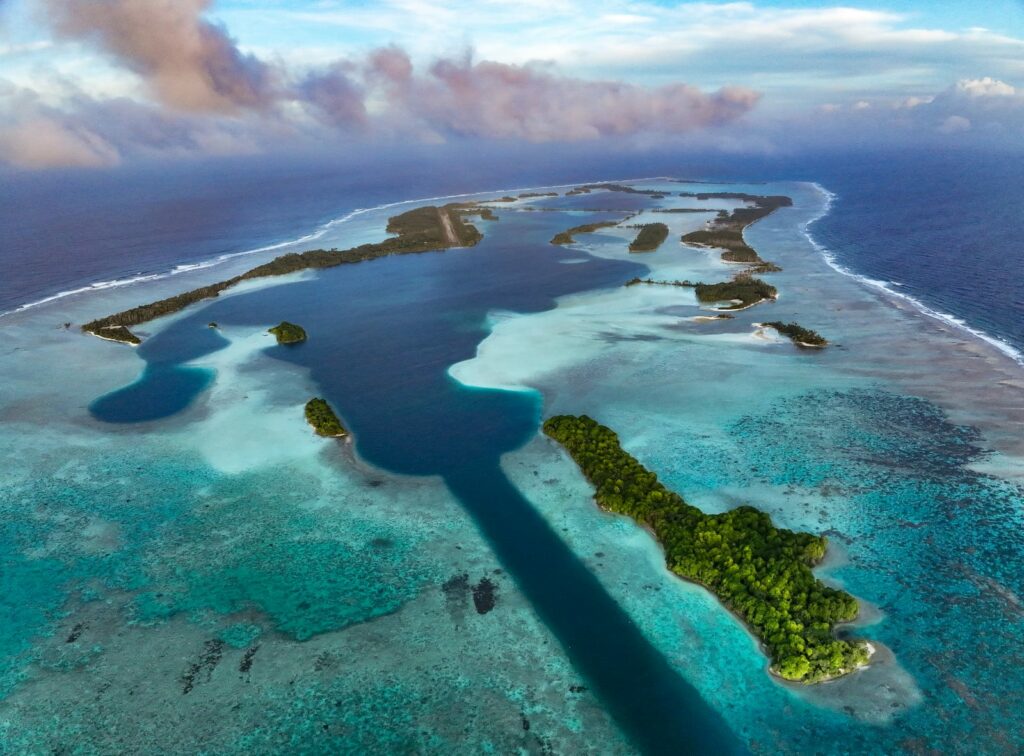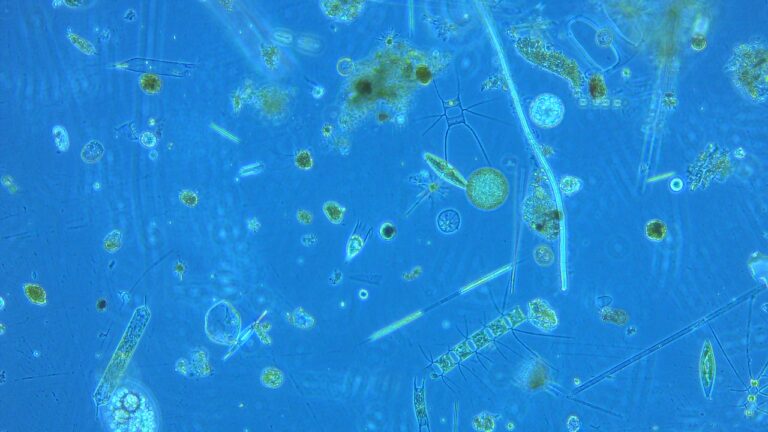Marine Science
Ocean current comes to the rescue for Pacific island reefs
Surprising changes to a Pacific Ocean current during one of the strongest recorded El Niños saved a remote island’s coral reefs while others were devastated by mass bleaching.

Marine heatwaves are emerging as a key impact of climate change and pose a particularly significant threat to corals that form the backbone of coral reefs. Researchers have now identified a phenomenon that could help coral reef managers better plan and act for the future.[1]
Every few years, the cyclic climate pattern called El Niño arises in the tropical Pacific, causing significant changes in winds, weather and ocean temperatures. From April 2015 to May 2016, the Central Pacific witnessed one of the strongest El Niño events ever recorded.
Coral reefs were so stressed by the warmer ocean temperatures that they experienced mass bleaching, whereby the stress caused corals to expel their symbiotic algae and become white. Now, scientists at KAUST along with international colleagues have identified localized ocean processes during this El Niño that provided much-needed sustenance to the coral reefs on the Central Pacific island of Palmyra, allowing them not only to survive, but to thrive. Their findings improve understanding of how and why coral reefs respond differently to stress.
Crucially, improving the ability of managers and conservationists to identify naturally protected reefs could form the basis for repopulating corals that are more exposed to the impacts of climate change.
“We had no idea that something positive could come from El Niño,” says KAUST coral reef ecologist Michael Fox. “The same processes that caused coral reefs to die on Central Pacific islands on the equator led to positive conditions just a bit further north. The real surprise is that something beneficial for corals happened during such a major El Niño.”
Fox is referring to the interesting chain of events in 2015-16 that helped Palmyra’s reefs survive, while those a mere 700km south on the equatorial islands of Kiritimati and Jarvis did not.
During El Niño, the ocean current at the equator is weakened, reducing the beneficial nutrients that are typically brought to the surface when this current is flowing strongly.

But further north, Fox and his colleagues found that the eastward-flowing North Equatorial Counter Current, which hits Palmyra’s western shores, was significantly strengthened during the 2015-16 El Niño. This, together with the development of a shallower sea surface layer around Palmyra, drove an upward movement of cooler plankton-rich waters to the island’s coral reefs. This process enabled the reefs to better manage the heat stress brought on by the rise in ocean surface temperatures.
Fox and his colleagues found that ocean models demonstrated that the life-saving processes that occurred during the 2015-16 El Niño were also present during the other two major El Niños to occur in the past half century. The data suggests that these ocean processes helped Palmyra’s corals survive during the most extreme marine heatwaves they have faced in the past and may continue to do so in the future.
“El Niño-associated heatwaves are the greatest threat to coral reef ecosystems globally,” explains Fox. “These events have far-reaching impacts across the tropics and can result in mass coral mortality across vast areas. Identifying coral reefs that have a greater chance of survival during these extreme events is critical to understanding the future of coral reef ecosystems.”
The study’s findings beg the question: are there other places where such ocean conditions align during El Niño and where reefs are doing better than expected?
“Our study shows that there are likely other reefs across the Pacific that benefit from a similar set of oceanographic conditions. Understanding where these are and whether these conditions facilitate coral reef persistence will help us identify which reefs have a greater chance of survival under climate change and to plan future conservation efforts.”

Palmyra was especially suited to this research, as it is an uninhabited U.S. federally protected island that, since 2006, has been home to a small research station established by The Nature Conservancy. By studying such a remote ecosystem, Fox and his colleagues were able to identify connections between ocean processes and coral survival that would be difficult to isolate on reefs impacted by humans.
“Palmyra Atoll is an ideal living laboratory to study the impacts of climate change on coral reefs and, importantly, to identify keys to reef resilience,” explains Joseph Pollock, senior coral reef resilience scientist of The Nature Conservancy’s Hawaii & Palmyra Programs.
“Its remoteness and highly protected status have helped the atoll’s reefs maintain their ecological integrity, while many reefs around the world have declined from local stressors, such as pollution or overfishing,” explains Pollock. “By comparing the responses of coral reefs in Palmyra to those in more degraded or disturbed areas, researchers can better isolate and understand the specific effects of climate change.”

Fox’s Ecological Oceanography Lab at KAUST plans to continue this research in Palmyra and to extend it to the Red Sea. The work is a collaboration between KAUST, Bangor University in the U.K., Scripps Institution of Oceanography and the National Oceanic and Atmospheric Administration in the U.S., and The Nature Conservancy.
“My group integrates organismal physiology, community ecology and oceanography to identify the patterns and processes that will help reefs survive climate change. We are exploring similar questions in the Red Sea and working to identify the physical processes that can help these unique reefs persist in such an extreme environment,” says Fox.
Reference
- Fox, M.D., Guillaume-Castel, R., Edwards, C.B., Glanz, J., Gove, J.M., Mattias Green, J.A., Julin, E., Smith, J.E., Williams, G.J. Ocean currents magnify upwelling and deliver nutritional subsidies to reef-building corals during El Niño heatwaves. Science Advances 9, eadd5032 (2023). article
You might also like

Marine Science
Tiny crabs glow to stay hidden

Marine Science
Mass fish deaths linked to extreme marine heatwave in Red Sea

Marine Science
Weeding out the secrets of Red Sea macroalgae

Bioscience
Digging into the world of plant-growth-promoting microbes

Marine Science
Rhodoliths found in a surprise location

Bioscience
Unique microbiome discovered in mountain streams

Marine Science
Examining phytoplankton’s past to reduce future algal blooms

Marine Science




